Based in Copenhagen, Tattoodo is the world’s number one digital destination for tattoo culture and lifestyle. With more than 2 Billion content views, Tattoodo is on a mission is to collect and share appreciation for tattoo art, while continually bringing relevant, original content and new services. From curated galleries of inspiration, to educational articles on the craft, and artist recommendations — Tattoodo facilitates the first steps in a user’s tattoo journey by providing the most important information in one place.
We met with Hannah Smellie, Community Manager, and Brady Mason, Head of Product at Tattoodo to discuss how Tattoodo is staying relevant by digitizing the tattoo industry and supporting millions of artists around the globe. We looked at the ways in which Tattoodo has contributed to help tattoo artists during the pandemic, and how it is facilitating the transition from walk-in appointments to a fully digital experience.
Hannah and Brady will talk about this topic more in depth at Design Matters 20, on Sep 23–24, 2020.
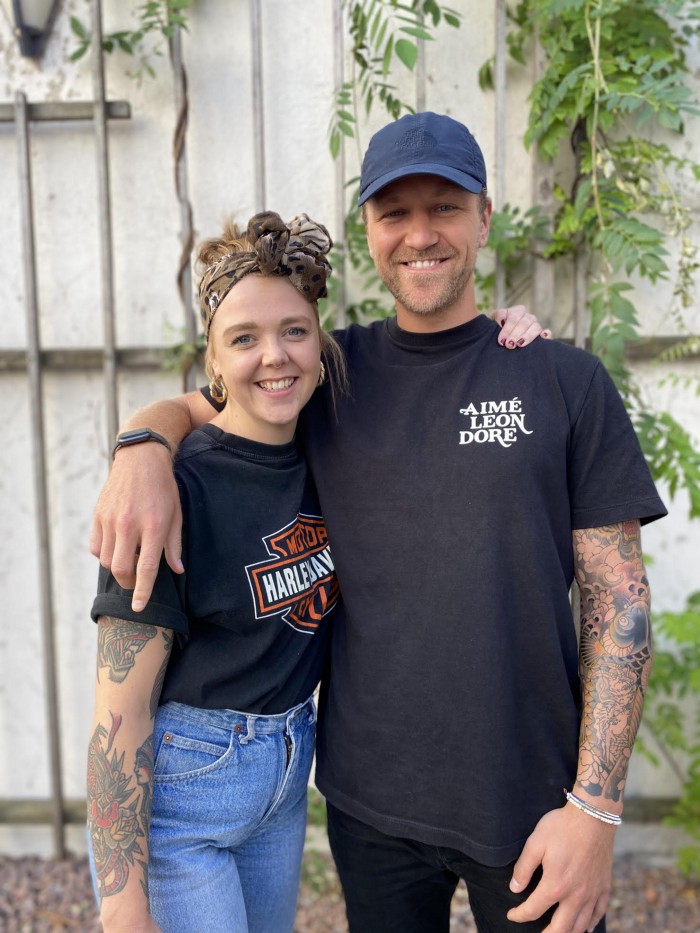
What’s the vision behind Tattoodo?
HS: In a nutshell, we’re focusing on the lifestyle and culture aspect of the tattoo industry and on supporting the people in it. We are trying to cater and adapt our product to support artists, as the industry changes and develops.
BM: Our slogan is “Everything tattoo”. Supporting our community is very important, but we’re also focusing on building our digital product, a booking platform that serves to facilitate the experience between clients, artists, and studios.
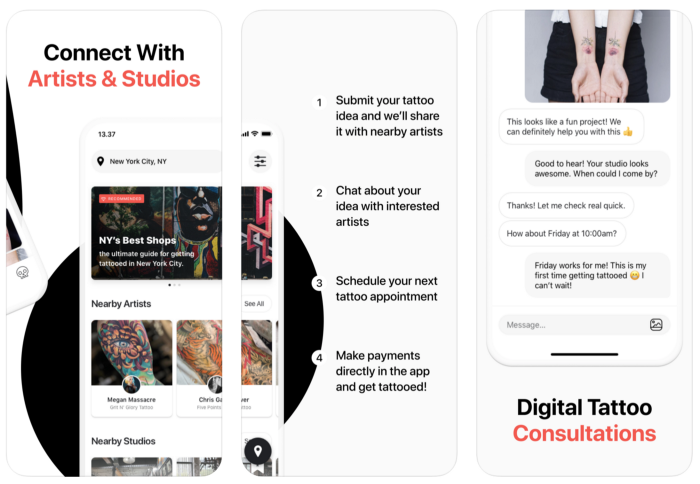
Do you feel that Tattoodo has made the tattoo industry more popular or has contributed to improve it?
HS: Tattoodo has surely given the tattoo industry more exposure to the mainstream. The tattoo industry has been gatekept for quite a while; many have felt intimidated by the idea of the “old school” tattoo shops, where you walk in confused or afraid to get tattooed. At Tattoodo we are addressing this by showcasing curated, high quality tattoo content to educate and familiarise our users to the industry
We’ve also taken Social Media into account. Social Media are now featuring more tattoo content than before. Exposing higher level artists in our platform helps our users recognise quality work and discern lower quality pieces.
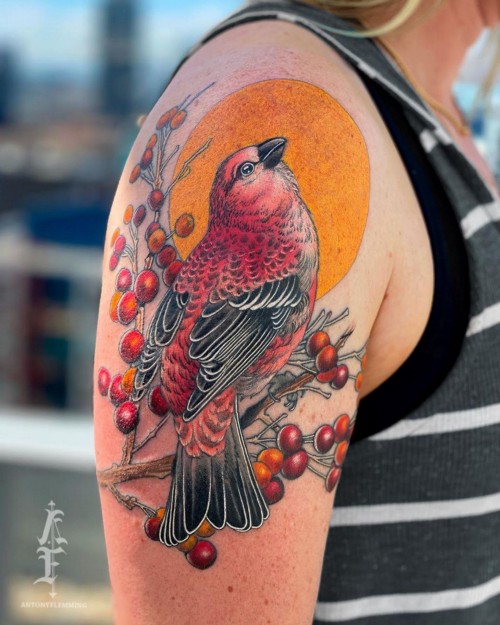
BM: Our social platform helps both ends of the spectrum. From an artist’s point of view, getting featured on Tattoodo is highly valued and respected, as many artists see this community as a qualified community. On the other hand, clients see the platform as an inspirational place to see quality images made by known artists. We are now implementing our own platform where people can see the artists that might fit their style, book a time with them directly on the platform and have a digital consultation. But we’re also giving artists all the tools they need to facilitate this kind of experience; we’re working to make it a one-stop shop type of digital experience.
Tattoos have a very physical nature. Therefore, it might be difficult to display the artwork on a digital platform as nicely as it would look in real life. How do you make sure that the pictures on your platform look appealing, realistic, and as close to reality as possible?
HS: We rely a lot on the artists and the photos they upload on their profiles. We have a verification process — which is part of my role — where we award artists different levels of verification. I review their work on their profile, make sure that they work in a legitimate studio, and then give them a ranking. So, the higher level work gets shown ahead of the lower level work. But we are also using AI to tag and sort our images.
BM: We read and verify every artist who signs up, and then, based on their expertise, or if they’re our ambassador — ambassadors get a special tag in our backend data structure — we set different rankings, to help users find the more verified and qualified artists, similarly to Airbnb’s Superhost system.
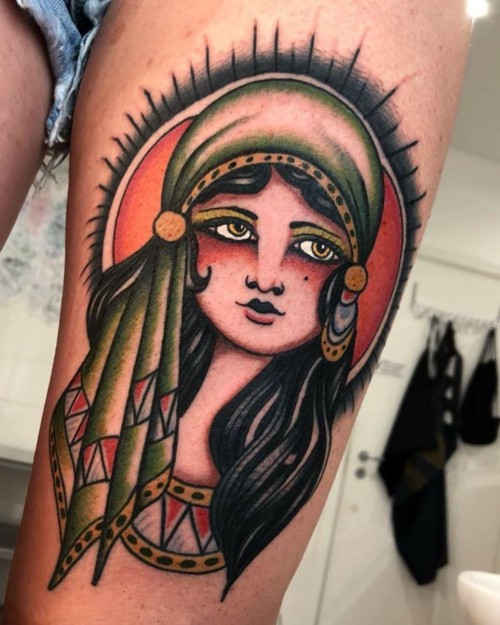
We have about 1.3 million user generated pieces of content uploaded to the platform. We have an internal AI tool that allows us to take all the hashtags from comments, or have people verify manually the quality of an image. We also have a percentage ranking on all the images. So if you’re searching for cats and mermaids (or purmaids!), the system creates those aggregations, and then we give a ranking to every single upload. Recently, we’ve also taken advantage of Mechanical Turk, the tool from Amazon where we can tag a tattoo by a specific style.
It isn’t highly accurate, but it can do basic tasks like recognising if something is or isn’t an actual tattoo. Because a lot of content is uploaded on our platform, we need to make sure that there is no explicit content and that all the artists and studios coming on board are legit.
There’s been a dramatic cleanup process over the last year, which we’re still working on. Up to one and a half year ago, there was no verification system in place and we had no true control of the data. We’ve cleaned up thousands and verified about 10% of our artist base so far. Because the design and the overall experience is now highly qualified, more and more people are coming back for a better digital experience.
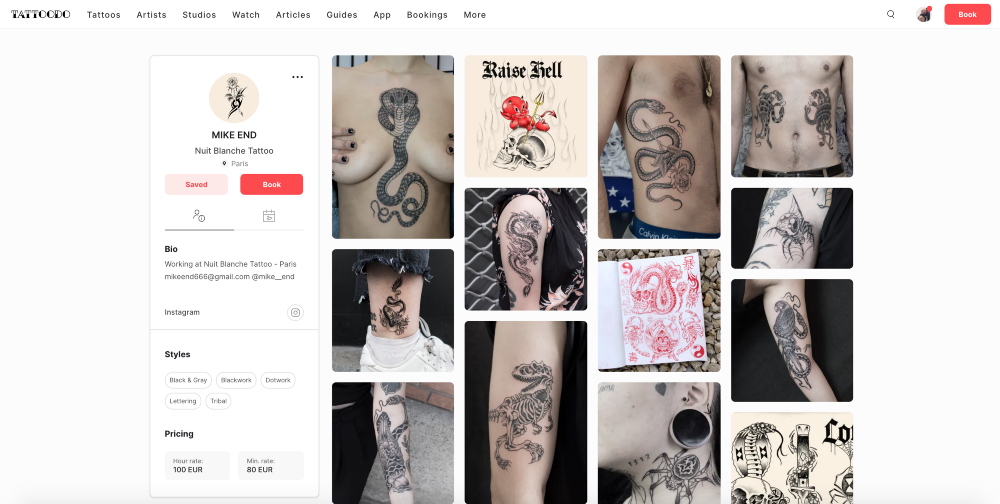
HS: Although we have systems in place stopping explicit content before it comes up on the platform, we need to think about what is considered explicit content. It’s difficult to set boundaries, since tattoos are on our body. People get tattoos on their bums and all sorts of sensitive places, but they also get tattoos of explicit content. We think some things are completely fair for people to see on the platform, such as breast cancer awareness content.
BM: Google had flagged us in the past because of our content. But now, Google, Instagram, and Facebook, are accepting ads and campaigns showing skin if they have the right message behind them. Our team is always making sure that our campaigns and images fit the right message.
Have you thought about looking into new technologies?
BM: Yes, we’ve been playing around with an AR tool that is not in the market yet. And it’s demo-able, so, we would be able to show it to people. With this tool you can take a picture of a part of your body and apply a motif on it. The motiv can be dragged around and changed in size, from a small design on your wrist to a full piece on your whole back. This way, you’d be able to see how a tattoo would look, almost as if you were there in the studio for a consultation.
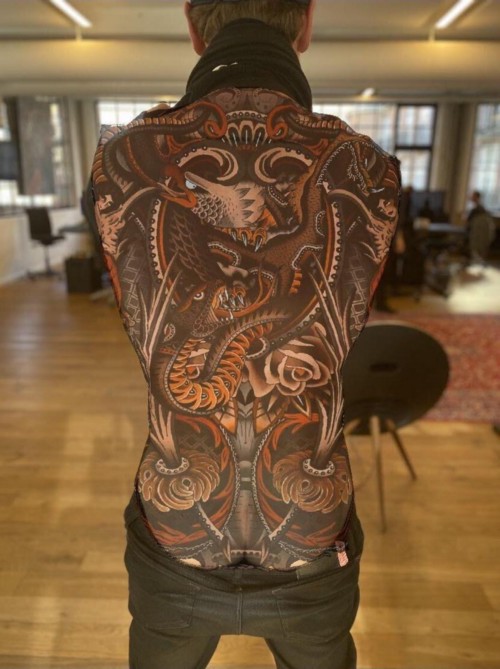
What challenges is Tattoodo facing? How do you work to overcome them?
BM: Facilitating the experience from artists to clients, making sure that we have qualified artists and quality images, so that the content and design are aesthetically pleasing and qualified, is surely one of our challenges.
HS: Another challenge we have is supporting the old school, non digitised, side of the tattoo industry as well as the modern side of it. Some artists want to only handle cash, draw on paper, and note down bookings in a diary. But with the world changing and developing, many clients are expecting a more modern way to go about the process. And with the progress of Instagram and other platforms exposing tattooing to the mainstream, many tattoo artists are starting not to follow the traditional training path where artists earn the right to tattoo after a long, hard apprenticeship with a mentor — which exposes them only to specific knowledge. With all the content on Tattoodo, we’re giving artists an opportunity to grow their skillset with some of the best artists in the world, which they would never have access to before. Something we can provide to artists, even after the pandemic, is to keep them busy and interested. A vital part of our offering is that we can help artists experiment with “beta tattoos” without trying to break the industry. Some might not be able to draw anywhere close to as good as Chris Garver, but they have an opportunity to learn from the best.
Finally, it’s fundamental for us to find ways to adapt to current times, marked by a global pandemic. This became a huge focus for us when the pandemic hit.
How has the pandemic affected the tattoo industry and your business? How did you react to it?
BM: COVID-19 hit the tattoo industry really hard, many businesses had to shut down. And because of the limitations imposed, many studios have become appointment-only. In a way, studios moving away from walk-in appointments has been good for us, since we provide a digital experience — you can book a face-to-face consultation or get fully booked directly on the app.
We’ve done a lot to support the tattoo industry during the pandemic. We ended up providing our service entirely for free to all artists and studios for four months. We also started featuring artists and their commissioned work; we tried to support their artwork because that was essentially the only way for them to get income. We also developed a series of masterclasses. We partnered with 20 artists to do live Zoom sessions with artists like Chris Garver and other well known tattoo artists who showed the community their technique — e.g. how they would draw a traditional Japanese tiger. We’ve also done smaller, recorded high resolution sessions, which gained us a lot of respect in the industry. Finally, we partnered up with some industry vendors to give discounts to the artist on supplies, like ink, lotions, etc.
How do you work to digitize the tattoo industry?
BM: As a designer, the most important thing is to be sensitive to the industry. We designers at Tattoodo always make sure there is space for empathy and user research. When I first started at Tattoodo, I went to New York for three weeks to visit studios and artists to build personal relationships, understand their day-to-day workflow, and see how they run their businesses. As a designer working with this product, I don’t have to be super technical, because the content, which is so rich, is what matters the most. For us, it’s about simplicity and understanding what the right experience to provide is, which comes down to trying to bridge that gap between the client and the artist.
Providing support to the artists and helping them adapt to the changes in digitalization and to the changes that our world is seeing is fundamental. And now with the pandemic, this has become more apparent than ever.
HS: Location is key. On Instagram you could see a tattoo you really like, but the artist could be in Korea. With Tattoodo we are trying to facilitate the good tattoo artists in your local areas suited to the style you’re after.
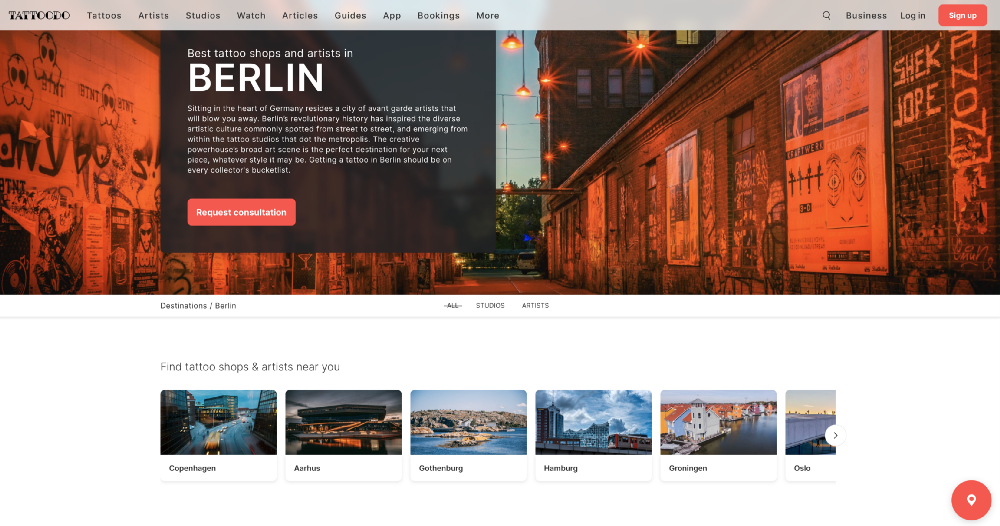
BM: Providing a great digital experience is important too. On Tattoodo you can create tattoo briefs: you fill out the size, the placement, a short description of the tattoo, and add some image references. That brief is then sent to all the artists and studios in the area you provide and match them with the specific styles. Match-making is used in all different types of industries, not only in online dating. People, especially nowadays, are quite hesitant to talk to somebody in real life, but if you have an app connecting you to someone, it’s easier to break down social barriers. The same thing applies to the tattoo industry; the first time you walk into a studio, you don’t know what to ask and how to act. But it’s up to the artists to pitch themselves and provide the information that makes the client trust them. This is an opportunity to make a global impact in the industry.
Where do you see tattoos and digital platforms in the future?
HS: It’s inevitable that the industry will digitize. I think Tattoodo is ahead of the pack. There are now a lot of digital platforms or websites popping up trying to achieve some tattoo directory or community. I think these platforms should just be a supportive tool and not try to change the industry.




